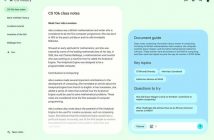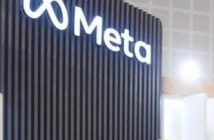“If you replace something useful, it tends to be missed in replacement value over time”
In next 120 days, the London Interbank Offered Rate (LIBOR) would no longer be a representative rate as the administrators will stop its daily publication after 30 years of existence. In further 500 days it would be truncated from financial system with the culmination of remaining forward contracts and rest consigned to history. It’s a pity that a few greedy bankers brought an inglorious end to an internationally ac- cepted bench mark of pricing finance costs. It is further painful that the benchmark is being binned much before accrediting a suitable replace- ment pricing tool. The finance world is desperately searching for a sub- stitute to sustain harmony in pricing across the globe and grotesque names like HONIA, TONIA, EONIA and SONIA are vying to occupy the vacated space.
LIBOR is a widely-used benchmark for short-term interest rates.The cur- rent LIBOR methodology, uses input data provided by LIBOR panel banks called Contributor Banks, produces a representative rate at which international banks conducting wholesale, unsecured funding market fund themselves in market in particular currencies for certain tenors. LI- BOR was being calculated for five currencies (USD, GBP, EUR, CHF and JPY) and for seven tenors in respect of each currency (Overnight/ Spot Next, One Week, One Month, Two Months, Three Months, Six Months and 12 Months). This results in the publication of 35 individual rates (one for each currency and tenor combination) every applicable London business day. All this will vanish soon.
LIBOR is often referenced in derivative, bond and loan documentation, and in a range of consumer lending instruments such as mortgages and student loans. It is also used as a gauge of market expectation re- garding central bank interest rates, liquidity premiums in the mon- ey markets and as an indicator of the health of the banking system.
Indian Regulator RBI has issued an advisory to banks to cease writing new contracts that use LIBOR as reference rates.They are advised to adopt any ARR (alternative reference rate) at the earliest but not later than 31 December 2021. Going by the number of forex contracts written by State Bank of India, Axis Bank and ICICI Bank, SOFR is widely expected to be used as the new benchmark rate in India re- placing LIBOR.The secured overnight financing rate (SOFR) is a benchmark interest rate for dollar- denominated derivatives and loans replacing the London interbank offered rate (LIBOR).
1. SOFR ( Secured Overnight Financing Rate) is based on transac- tions in the Treasury repurchase market and is preferred to LIBOR since it is based on data from observable transactions rather than on estimat- ed borrowing rates. While SOFR is becoming the benchmark rate for dollar-denominated derivatives and loans, other countries have sought their own alternative rates. Salient economies across globe are embrac- ing various Alternative Reference Rates (ARR) , some of which are :
2. SONIA ( Sterling Overnight Index Average) British banks have de- cided to adopt this ARR. There are various differences between SONIA and LIBOR. SONIA is an overnight rate, not a term rate, whereas LIBOR gives the cost of borrowing for a range of different periods (1 month, 3 months, 6 months, 12 months), SONIA is a single rate that measures the cost of over-night borrowing, LIBOR was long term benchmark.
3.EONIA ( Euro Overnight Index Average) EONIA is linked to Euribor, published by banks in Frankfurt, Germany which is the head quarter for Euro. Euribor stands for for Euro Interbank Offered Rate. It is an inter- bank rate comprising of the average interest rates from European banks to benchmark pricing of loan given by one bank to another. Euribor has various maturities ;each maturity has its own interest rate.
4. HONIA ( Hong Kong Dollar Overnight Index Average) Hong Kong will be using this benchmark in place of LIBOR.
5. TONIA (Tokyo Overnight Index Average) Japan shall replace LI- BOR with this.
6. BBSW (British Based Sterling Weighted Rates) Australia will use BBSW in lieu of LIBOR.
7. SARON ( Switzerland Average Rate Overnight) In Switzerland, this is the reference rate based on actual transactions and pricing in the Swiss money market.
LIBOR was the best of all the above as it fitted into almost all risk models, valuation tools, and product design.Interest rate swaps (IRS) are benchmarked with MIFOR, which includes LIBOR. Mort- gage rates are set against the LIBOR. The fixing of spread adjustments by the International Swaps and Derivatives Association held an econom- ic link between LIBOR and selected risk-free rates for referencing con- tracts that expire after June 2021.Once the reference is decided, there must be agreement on the basis of yield difference between the old and the new benchmark avoiding subjectivity and misuse of historical data to sustain robustness of face change.
RBI had estimated that around $50 billion of debt and $281 billion in de- rivatives would expire after 2021. There are government contracts linked with LIBOR. The borrowings or deposits would directly get affect- ed by the differences in cost that may arise when the benchmark is changed. Companies and banks would need to seek a hedge to counter potential losses. The $50 billion of debt would be equivalent of Rs 3.75 lakh crore and a 0.1% variation means a loss of Rs 375 crore. Globally, outstanding transactions linked to LIBOR are at $223 trillion, of which $74 trillion could be maturing by June 2023.The bulk is in derivative contracts for $213 trillion.
RBI’s instructions to banks to remain agile to the fact that LIBOR will be going off the market from next year focusses attention on how to handle contracts that are expiring in December 2021.Any new benchmarking will mean that there will be losers and gainers, and the amounts in- volved may be large. Taking this forward, the threat of risk posed to the financial system needs to be evaluated. Banks must make disclo- sures as part of market risk carried and the mitigating measures.
As December 31, 2021 approaches fast, the forex training systems must mentor the staff well, because based on the recommendations of the Al- ternative Reference Rates Committee of RBI, Banks are already using SOFR (Secured Overnight Finance Rate) as an alternative, with little preparation and no experience.LIBOR successfully played a role of a unifier in finance world throughout its life. Ease of using LIBOR shall be certainly missed.
Rightly said, “Success is not how long you live, but how much dif- ference you bring in lives of others. Thanks LIBOR, Bye Bye.
-Hargovind Sachdev
hargovindsachdev@gmail.com





